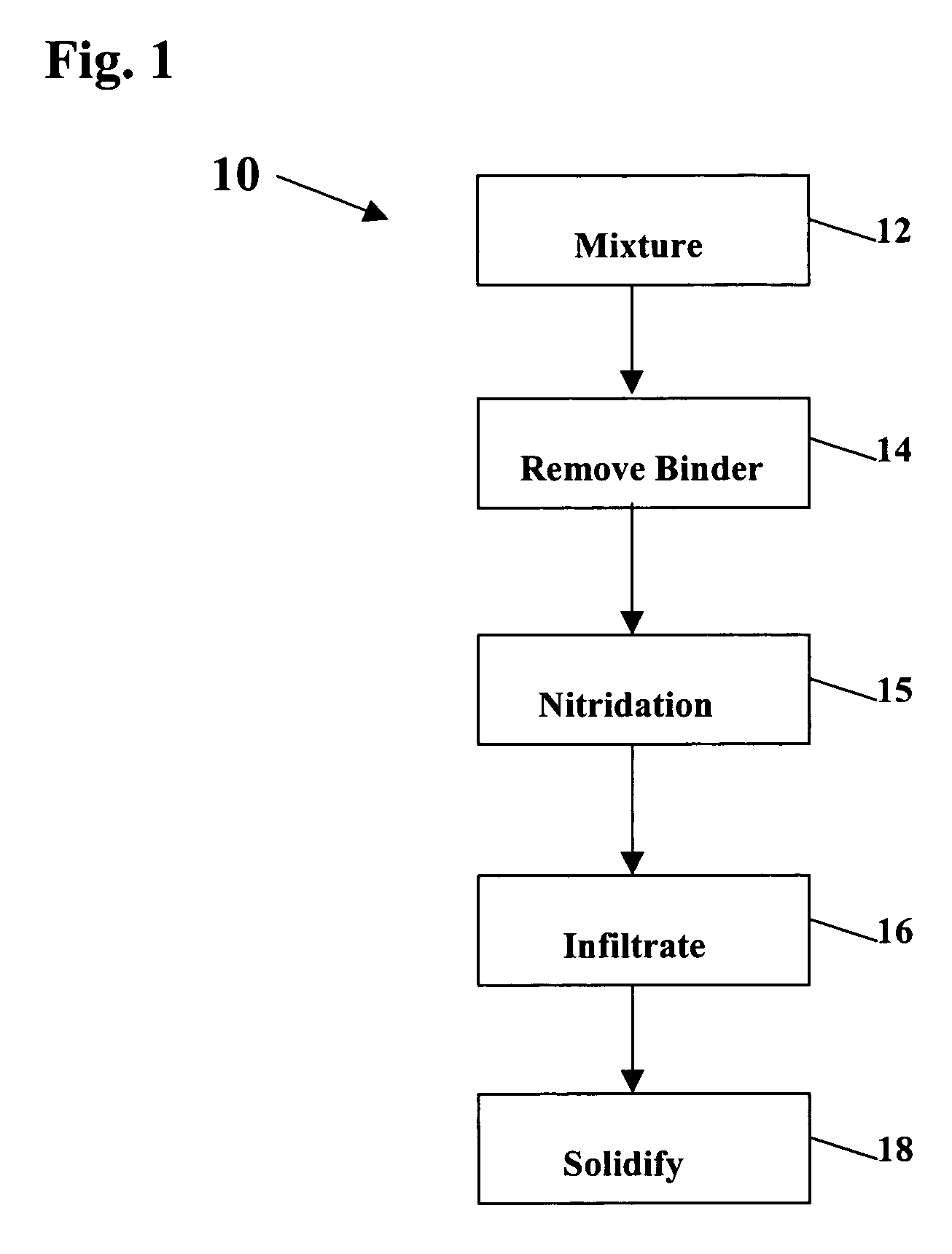Infiltrated aluminum preforms
- Summary
- Abstract
- Description
- Claims
- Application Information
AI Technical Summary
Benefits of technology
Problems solved by technology
Method used
Image
Examples
example 1
[0067]A green composite was made by selective laser sintering of a powder mixture containing 6061 powder, 2 wt % Mg and 10-vol % nylon binder using each of the nylon binders previously recited as being commercially available from Atofina S.A. An infiltrant with a composition, by weight, of Al—13.8Si—4.9Mg was placed in contact with the preform. The amount of the infiltrant was sufficient to just fill the pore volume. The assembly was then placed inside a crucible and covered with a support powder consisting of alumina containing 1 vol % Mg powder. The crucible was then placed inside a nitrogen-atmosphere furnace and heated at approximately 90° C. per hour to a temperature of 540° C. and held for a period of 2 hours to allow the skeleton to form. The furnace temperature was then increased at the same rate to 570° C. and held for 4 hours to allow spontaneous infiltration of the whole preform. The parts were then furnace cooled until the temperature was below 200° C. and then removed f...
example 2
[0069]An alloy was made and processed as per Example 1 but with an infiltrant composition of Al—33 wt % Cu.
example 3
[0070]An alloy was made and processed as per Example 1, but with an infiltrant composition of Al—10.5Si—10Zn—5.5Ni.
PUM
| Property | Measurement | Unit |
|---|---|---|
| Temperature | aaaaa | aaaaa |
| Temperature | aaaaa | aaaaa |
| Temperature | aaaaa | aaaaa |
Abstract
Description
Claims
Application Information
 Login to View More
Login to View More - R&D
- Intellectual Property
- Life Sciences
- Materials
- Tech Scout
- Unparalleled Data Quality
- Higher Quality Content
- 60% Fewer Hallucinations
Browse by: Latest US Patents, China's latest patents, Technical Efficacy Thesaurus, Application Domain, Technology Topic, Popular Technical Reports.
© 2025 PatSnap. All rights reserved.Legal|Privacy policy|Modern Slavery Act Transparency Statement|Sitemap|About US| Contact US: help@patsnap.com



